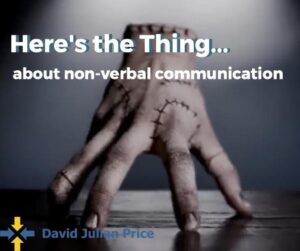Characteristics of people who chair a meeting well

Decisive leaders are respected and admired. If a meeting goes round and round without a decision it reflects poorly on the person running the meeting. When you see a meeting that’s run really well it’s inspiring, and much wisdom can be learned from watching.
On the flip, if the meetings you attend are not run well you may pick up bad habits thinking that what you see is acceptable.
In a nutshell, here’s a guide to the main differences between how an experienced, effective Chair runs a meeting compared to a Chair who has a bit to learn.
Effective Chair – Listens a lot and says very little
Bit to learn – Constantly gives their opinion
Effective Chair – Speaks after everyone else has spoken
Bit to learn – Always speaks first
Effective Chair – First words on any issue are “what do you think?”
Bit to learn – First words on any issue are “I think we should…”
Effective Chair – See themselves as a facilitator of the discussion
Bit to learn – See themselves as “the one in charge”
Effective Chair – Gives their opinion last
Bit to learn – Gives their opinion first
Effective Chair – At the end of every item, asks the minute taker to read out what’s been recorded so there’s agreement on the information written
Bit to learn – Never asks the minute taker to read out the recorded information
Effective Chair – Clarifies at every point the exact meaning and wording of any resolution, and the action required
Bit to learn – The chair says they’ll sort out the details later
Effective Chair – Allows the minutes to be sent directly to participants
Bit to learn – Insists they “check” minutes before anyone sees them
Effective Chair – Reads body language accurately and knows the way the meeting will go before any vote is taken
Bit to learn – Isn’t aware of the body language happening which can give clues to the likely outcome
Effective Chair – Focuses on the process of the meeting
Bit to learn – Focuses on the content of the discussion
Effective Chair – Acknowledges and manages conflict
Bit to learn – Pretends conflict is not there and makes no effort to manage it
Effective Chair – Sensitively draws out the wisdom, experience and knowledge of quieter people
Bit to learn – Ignores people who do not speak up
Effective Chair – Has a sense of humour and runs meetings in a friendly atmosphere
Bit to learn – Chairs meetings in a dictatorial style
Effective Chair – Understands the more agreement there is, the more successful the resulting action
Bit to learn – Does not understand “their way” may not work, as they see themselves as “the boss”
Effective Chair – Manages a skilful blend of people, tasks and results
Bit to learn – Tends to focus on the result they want regardless of the consequences
Effective Chair – Knows how to spot distractions for what they are, and is able to get the meeting back on track quickly and respectfully
Bit to learn – Is unaware and/or unable to rein in ramblers and distractors
Effective Chair – Focuses on the 3GN philosophy – the Greatest Good for the Greatest Number
Bit to learn – Thinks success is getting “their way”
Effective Chair – Uses a blend of formal and informal meeting procedures for a more efficient and effective meeting
Bit to learn – Does not use any meeting procedures at all to manage the group
If you’d like to learn more strategies and nuances of running better meetings, take a look at David’s Chairing Meetings online course. https://walktall.thinkific.com/courses/how-to-chair-a-meeting
If you need expert help navigating your next AGM or board meeting, or guidance on how to define and write your organisation’s Ground Rules, I’m at the other end of an email or phone. I’d love to chat with you.
www.davidprice.com [email protected] 08 6165 8867




